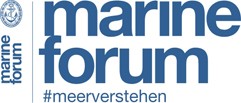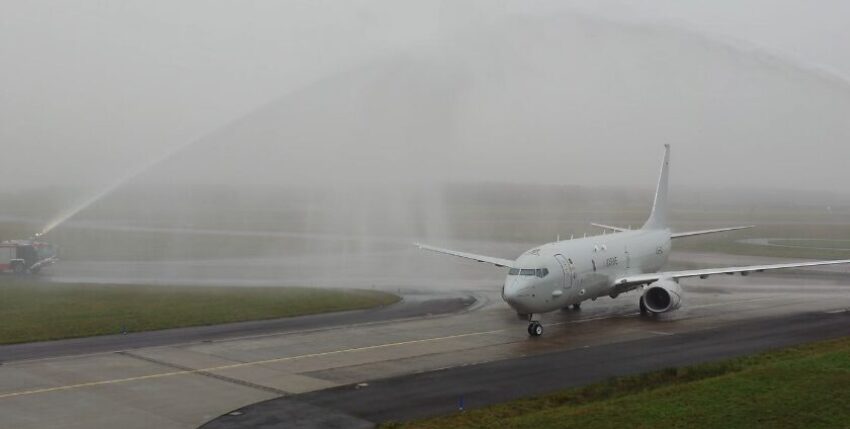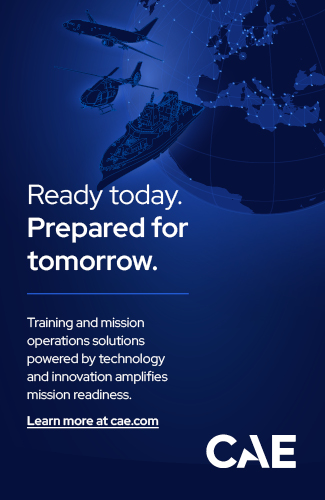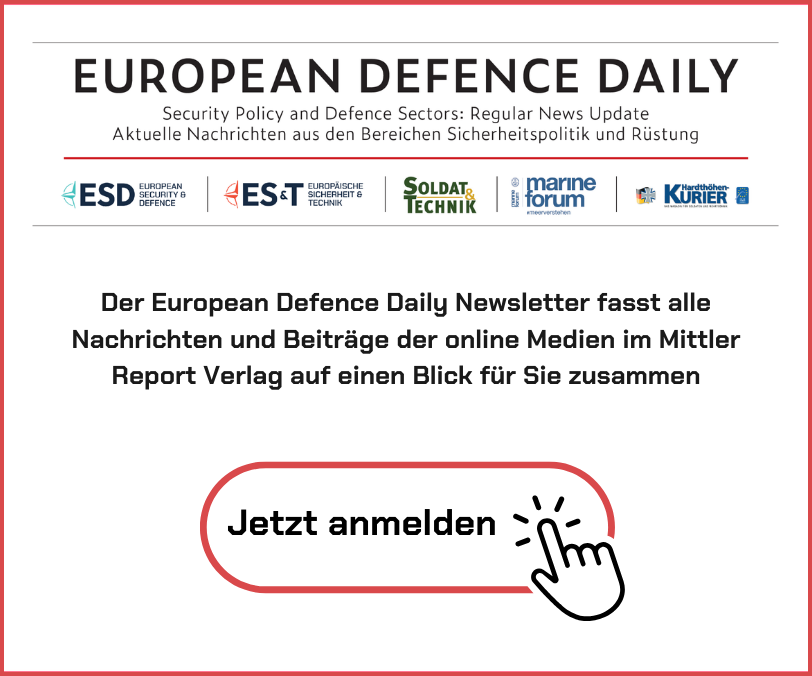Landing of the first Marine P-8A Poseidon at Nordholz airbase
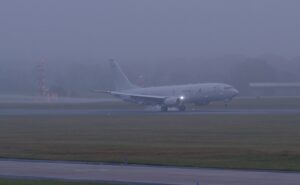
The aircraft, built by Boeing in Seattle, flew from the USA via Iceland to Berlin on 7 November. Norway flies them, Great Britain flies them, others want them. The transfer crew landed what is now the Bundeswehr's largest fighter aircraft in Berlin Schönefeld. Minister Pistorius received it in person. The flight from Berlin to Nordholz with the eleven-strong crew and several guests, including the Commander of the Naval Aviation, Captain Broder Nielsen, and the Commander of Operations, Rear Admiral Jens Nemeyer, on board, took barely 40 minutes. The P8 is 150 knots faster than the P3. At 16:35 local time, the landing gear of the Poseidon, which is based on a Boeing 737, touched ground in Lower Saxony for the first time. There was a roar of applause and the airport fire brigade greeted the new aircraft with traditional fountains from their fire extinguishing cannons.
Acquisition and integration of the new "MPA"

Germany has ordered a total of eight Boeing P-8A Poseidon aircraft. This was decided in 2021 and will cost the taxpayer 3.1 billion euros. In return, it will receive modern and effective capabilities for the German Navy. When all of the aircraft of this type are stationed in their new home in Nordholz in 2028, many companies will also be based there to maintain and repair the aircraft. The district of Cuxhaven can expect up to 400 more new jobs than the Bundeswehr, which is already the largest employer in the area. This will put the formerly tranquil coastal airport in the top league of NATO: training, maintenance and file integration with partner nations, including the USA, the United Kingdom, Norway and Australia, will not only increase the efficiency and operational readiness of the maritime air force, they will also make Nordholz more international. According to the Minister, the political preparations for the co-operation have already been made - the naval aviators in their community are already ensuring this. The aircraft are fully developed, they were available: no lengthy planning, no gold-edge solutions, no special requests. That's a good thing.
It was a long journey.
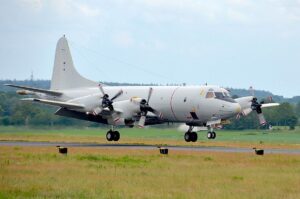
Five years ago, it seemed to be the end for an important capability of the German Navy: Maritime reconnaissance, early warning, submarine hunting and anti-submarine warfare, powerful presence at sea, search and rescue, support for surface forces, situational awareness, joint force interoperation - all in co-operation with the Allies. An important multi-functional capability for maritime national and alliance defence. Around 20 years ago, an ageing Lockheed P 3 Orion replaced an obsolete French Breguet Atlantic maritime patrol aircraft. Purchased by the Dutch Navy, the weapon system, which was not cheap to buy anyway, proved to be difficult to maintain and sustain. Despair spread: there were only concepts on the European market, no short-term solutions. It was not just a question of image, of being taken seriously as a fighter on an equal footing in the concert of large northern European navies, it was also about the universal capabilities that not all navies could afford. Once these are gone, pilots and operators are dismissed and retired, it's over. You can start all over again.
This must ignite now
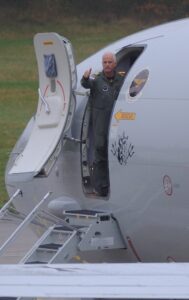
The German Navy fought and did not agree to vague deals. Nor did it accept lazy compromises such as reduced capabilities with a drone called "Eurohawk". The vision and idea were there: we want an MPA (maritime patrol aircraft), we want, no, we must be able to defend our country in this dimension. That began in 2020 and was far-sighted. Imagine if the German Navy were without this capability today in view of the tensions in the Baltic Sea. It would have been unthinkable if the then Inspector of the Navy Andreas Krause had been rejected by the Defence Committee of the German Bundestag. And now it is here: the Boeing P8 Poseidon. And it was euphorically welcomed in Nordholz. Gone are the days of spare parts shortages, gone are the days of improvisation. No, the predecessor P 3 was not as bad a deal as some would have us believe. It was not a failure, it served well in many missions in the Mediterranean and the Horn of Africa. It has retained its capability. Yes, it was a hair-raising experience, it was always in short supply and very, very expensive. When the US Navy stopped flying the aircraft a long time ago, only a great deal of skill was able to save something like operational capability. The people who will now make the P 8 operational have been training under its now dilapidated wings. It will be difficult, it will not be perfect straight away. As always, there will be delays, there will be criticism and people will make mistakes. But it finally has a future. You could see it in the beaming faces today. Everyone has pulled together and will continue to do so. All members of the squadron were on hand to greet the crew and aircraft as they flew in. There was laughter, hugs and toasts! It remains to be seen whether the eight will remain: an option for a total of 12 is possible. This also means that the original intention to buy the P 8 only as a transitional aircraft is actually off the table. And nobody is talking about it any more. And what nobody mentioned today, but every insider realises, is that modern weapon systems are attractive because you can learn a trade and build a future here. This is also a relief for the German Navy, which is suffering from a shortage of skilled labour. "That has to ignite now" said the commander of the naval aviators, Captain Broder Nielsen.
